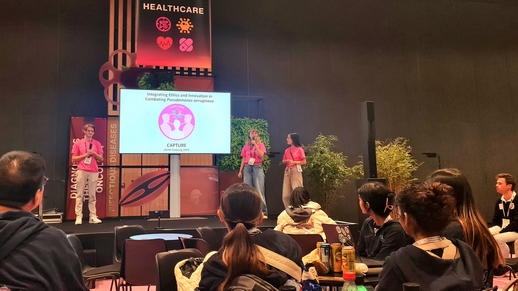The growing threat of antibiotic resistance and an innovative solution: CAPTURE
Antibiotic resistance is associated with three million deaths worldwide every year. But estimates predict that by the year 2050, this number could rise to ten million, which is comparable to the current number of deaths caused by cancer. So this is already a significant issue and will become an even bigger concern in the near future. An especially serious threat comes from the ESKAPE pathogens – a group of bacteria notorious for evading antibiotic treatments. This year's iGEM project CAPTURE was designed to CAPTURE the ESKAPE pathogens, or more specifically, one of them: Pseudomonas aeruginosa, the major cause of ventilator-associated pneumonia.
To replace antibiotics, we implemented antimicrobial peptides (AMPs)—evolutionarily conserved effectors of the innate immune system. By binding to bacterial membranes, AMPs cause pore formation and disrupt membrane integrity, making it much harder for bacteria to develop resistance.
To circumvent the production costs and poor pharmacokinetics that come with AMPs, we encoded the peptide on a plasmid for delivery to, and expression in the target bacteria itself. Basically, at the site of infection, P. aeruginosa is transformed to produce AMPs and self-destruct.
Vesicular Carrier Systems for targeted delivery of plasmids into the bacteria
For the delivery of the plasmid, we explored two distinct vesicular carrier systems in parallel: Lipid Nanoparticles (LNPs) and Outer Membrane Vesicles (OMVs).
- Lipid Nanoparticles (LNPs): These lab-produced vesicles (50-500 nm) use synthetic lipids. By fine-tuning lipid composition and surface modifications, characteristics like payload capacity, stability, and target specificity can be optimized.
- Outer Membrane Vesicles (OMVs): are naturally secreted by gram-negative bacteria (20-200 nm) and play an important role in horizontal gene transfer and stress responses. We employed a modular SpyTag/SpyCatcher system, making use of a phage tail protein, for specific targeting of P. aeruginosa.













